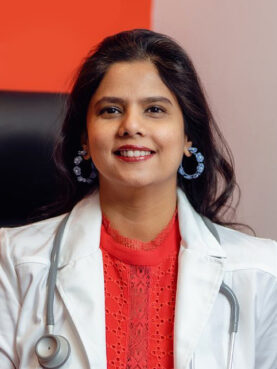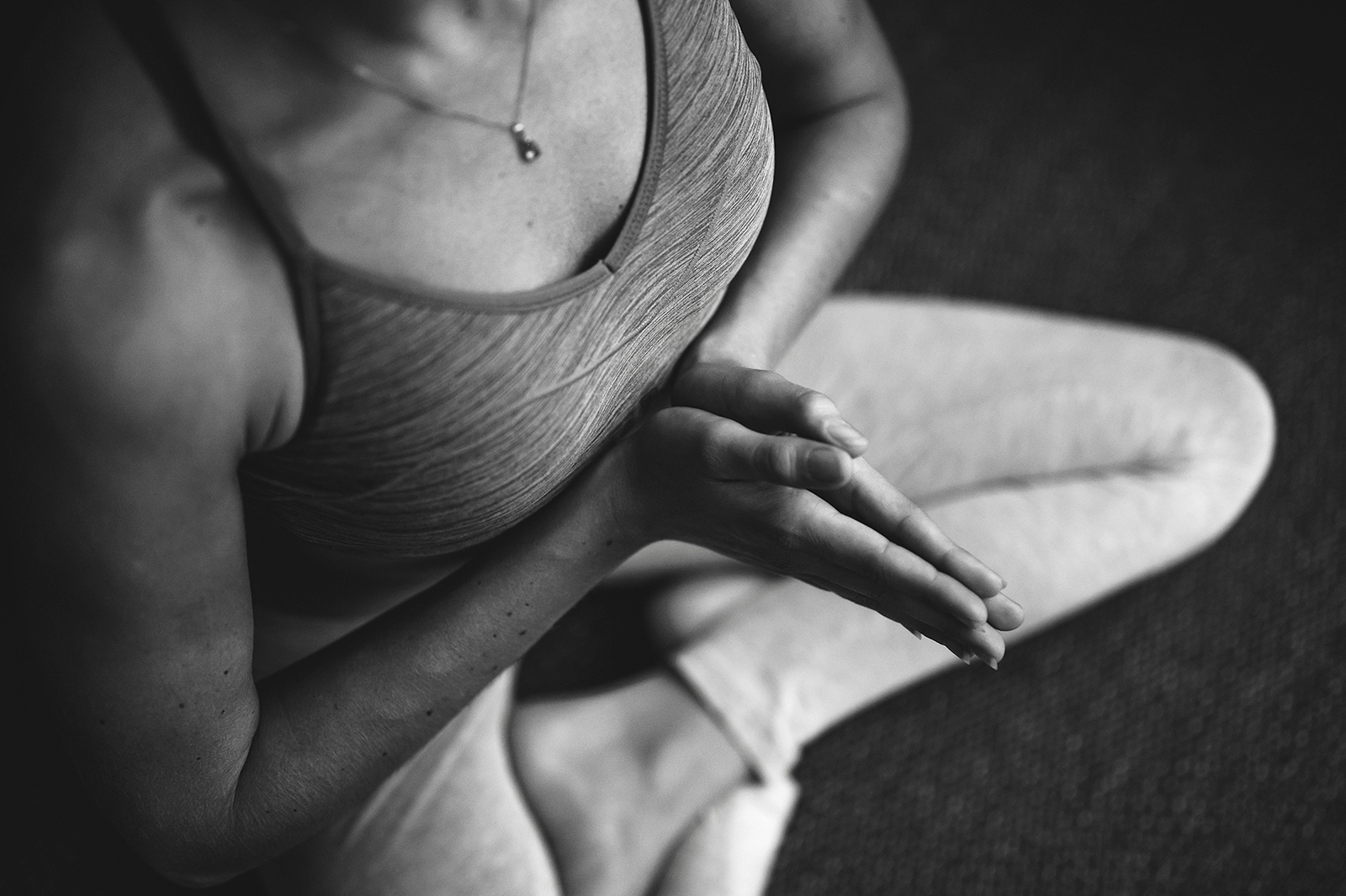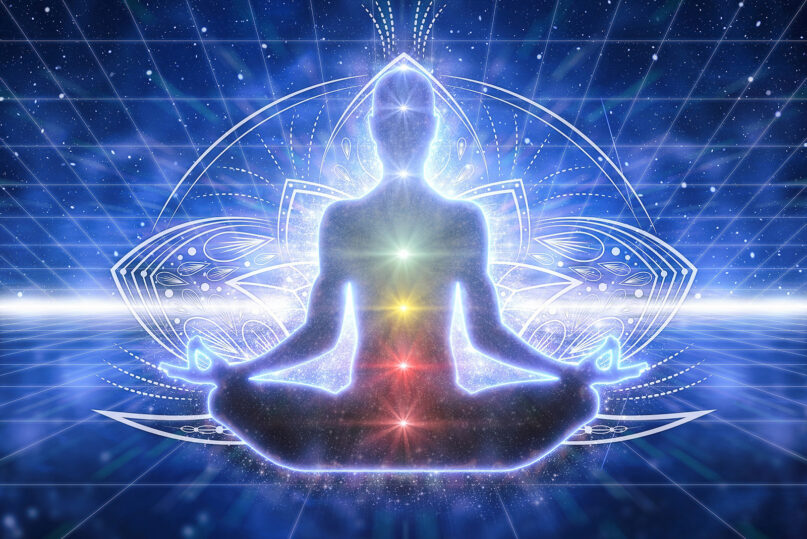(RNS) — After her father’s death five years ago, Nirmala Chetty, a New Jersey medical doctor who now goes by Dr. Sahila professionally, was diagnosed with bipolar depression and thyroid issues, among other ailments. She found herself hopping from hospital to hospital looking for relief, to no avail.
All the while, Sahila was searching deep into her Hindu and Indian roots for a cure. Today, the former internist said, she is “pill-free, disease-free and stress-free,” and credits the scientific powers of chakra healing.
“It’s very sad that, you know, such a beautiful and crucial concept is lost today because people don’t have faith in it,” said Sahila, who runs her own clinic called Wellness with Sahila. “People don’t want to spend time trying to understand, and people don’t want to believe it.”
Chakra healing has been ridiculed by critics as a false science, and even its defenders admit it has been co-opted by self-described healers who demand hundreds of dollars for treatments. Popular notions of chakras — energy centers in the body, according to practitioners — associate them with colors and shapes standing for moods and meanings.
But as yoga and other forms of healing with their origins in India become accepted in the West, chakra teachers are working to dispel the myths and assert what they call the science behind their practice.
RELATED: Alabama lifts ban on yoga in schools. Sort of.

Nirmala Chetty goes by Dr. Sahila. (Courtesy photo)
“As Indian thought has come to the West, it’s gone through various incarnations,” said Maetreyii Ma Nolan, a spiritual teacher in California. “First as a spiritual tradition, and then as asana, or yoga posture tradition.”
Chakra healing is an ancient Hindu tradition that holds that chakras — “wheels” in Sanskrit — correspond to specific nerve endings and internal organs. The body is said to have seven chakras, most famously, perhaps, the “third eye” in the forehead, where many Hindus wear an adornment called a bindi.
When chakras are blocked, according to Sahila and other practitioners, the body can suffer emotional, physical and spiritual damage. The muladhara chakra, at the base of the spine, associated with identity, may cause depression, anxiety and narcissism if not aligned. A blocked svadhisthana chakra, located in women’s lower abdomen, can lead to problems with childbirth.
Healing these blockages, Sahila said, requires surrendering the ego and taking a journey of “sadhana” — a daily practice of yoga and meditation that targets each chakra along with its associated natural element.
Such talk has led many in Western medicine to dismiss chakra healing as “alternative,” or “new-age,” but, said Sahila, “there’s a science to it, and if you understand the science to it, then the flow just automatically happens.”
One of Sahila’s clients, Hina Mehta, who migrated to the United States from India in the early 2000s to complete a neuroscience fellowship at the National Institute of Health, testifies from personal experience that chakra healing is compatible with Western medicine.
As a scientist, she was initially embarrassed to discuss her explorations in Eastern healing with peers and told no one when she received her Reiki certification in 2013. But she is adamant that Hindu philosophy and Western science are not mutually exclusive. “I come from a science background,” she said, “but I do believe in some of the things that we cannot explain.”
Eschewing talk of “colors” and “candles,” Mehta points to the chakras’ direct ties with the body’s hormone-producing glands. Yogis and gurus long ago figured out how to send focused energy to one gland at a time, she maintains, with specific yoga postures and hand movements, called mudras.

(Photo by Conscious Design/Unsplash/Creative Commons)
After her father unexpectedly died in 2022, Mehta found comfort in “having two ways to describe” her grief and depression. “Yes, it is all chemical reaction in the brain,” said Mehta. “My serotonin is down, my dopamine is down. But at the end of the day, I could immediately connect it with this chakra concept. Now I had a tool: “Okay, I need to do these yoga poses and I need to meditate like this to come out of that and regulate my internal chemical balance.”
Another client, Lata Nigam, said she was neither religious nor spiritual 15 years ago when she found herself looking for more answers after a breast cancer diagnosis. Western medicine, she said, was helpful for the short term, “but they only treat what has happened right now,” said Nigam. “Internally, where did it start? Where did it stem from?”
A complete lifestyle change followed her diagnosis, and with it came a belief in the Hindu dharma, as well as the “culture of questioning” that comes along with it. “Who knows, maybe from a previous lifetime that was in me,” she said.
Though Nigam said Dr. Sahila, whose name means “partner” or “friend,” changed her life for the better, she says it is vital to find the right kind of person to guide one on their healing journey through sadhana.
“If somebody says they can do it for you, that is not true,” she said. “You have to use the tools that they’re giving you, and at the end of the day, you yourself have to do the practices to get better.”
Some champions of chakra healing blame Westerners themselves for chakra healing’s reputation as a quack medicine. Nolan, a licensed clinical psychologist, said Caucasian spiritual thinkers “get creative” in their explanations of Hindu healing, using partial knowledge of what is, she said, “a very sophisticated system.”
On the surface, Nolan may look like one of these dilettantes. Now in her 60s, she found her “inner guru” in her early 20s through a series of what she calls “deep mystical experiences” and felt called to India, where she was initiated into a yoga meditation practice from “orange-robed Swamis.”
But today she combines her background in psychology with extensive research in Tantric philosophy in leading the ashram north of San Francisco, where she and her husband lead weekly meditation sessions for groups of 12. “It’s people who have a sincere desire to know the one eternal self, and also who have an understanding and an appreciation for the guru system,” she said. “It’s people who have a desire to see the non-dual unitary wholeness of being, and who follow the yogic path.”
Like other teachers, however, Evan Rofheart said belief in Hindu concepts of karma, reincarnation or other traditionally Hindu doctrine is “completely unimportant” to chakra healing work. Not that there is not some belief involved in his own practice. Rofheart said he became the leader of his trademarked Divine Energy Healing practice after a “miraculous” divine energy transfer from Shirdi Sai Baba, an Indian spiritual master commonly revered by both Hindus and Muslims in India.
Since the “Baba energy” came into Rofheart in 2008, giving him, he said, the ability to heal mental and physical blockages, “everything changed very very rapidly.” Now, Rofheart’s clients, who call him “Evananda,” feel healing from a phone call or email from their teacher, as, he said, “the soul can be reached anywhere, and it isn’t really bound by space or time.”
But scientific-minded practitioners such as Sahila point out the correspondence between the seven chakras and the physical reality of the cosmos and human lives: “The moon takes 28 days, or seven times four, to rotate around the sun, a woman takes 28 days, or seven times four, to have a menstrual cycle,” she said. “This has been happening for centuries, millions of millions of years. And no scientific advances can ever cause a change to these things.”
If more people realized the authentic science behind chakra healing, she said, we would all be better off. “When people experience the chakras opening, then the knowledge is just humongous,” said Sahila, whose opening of the throat chakra, or Vishuddha, has allowed her to express her thoughts and words more clearly. “There’s no way to stop: it’s overflowing.”
RELATED: Hindu American organizations adopt a new short film on anti-Hindu ignorance





